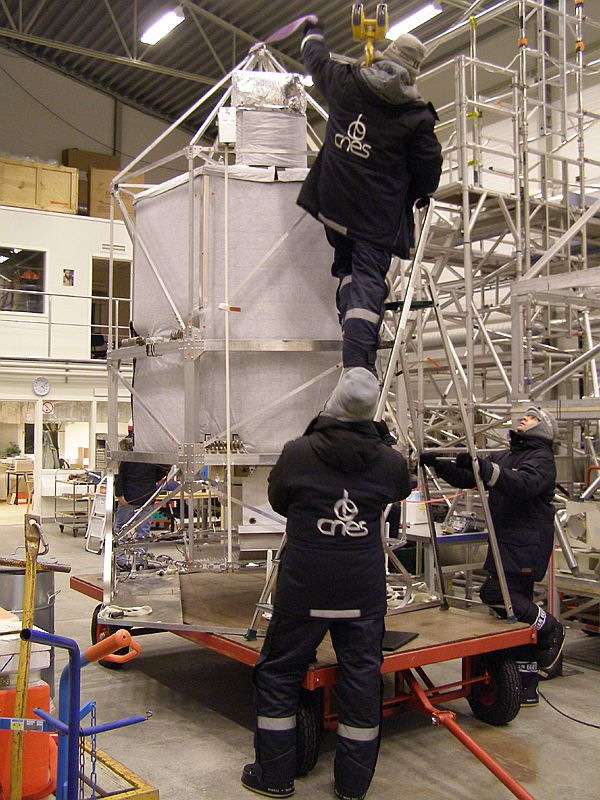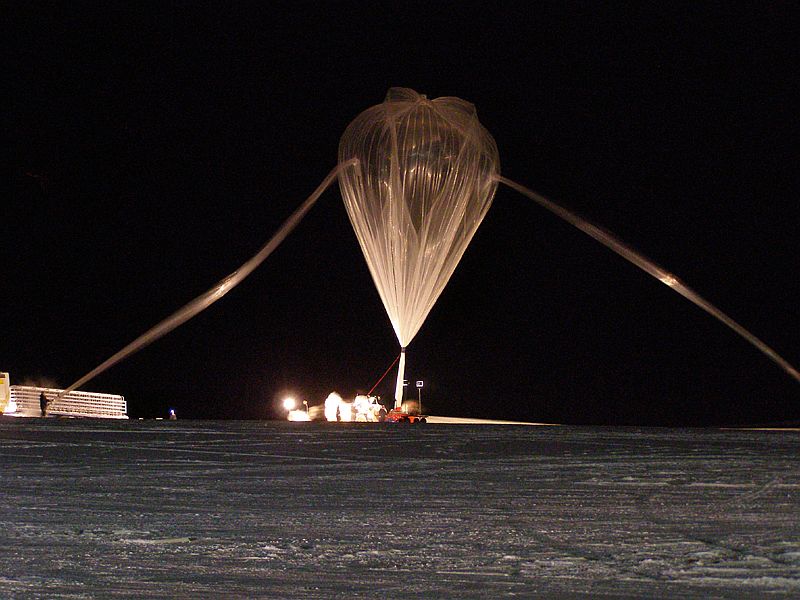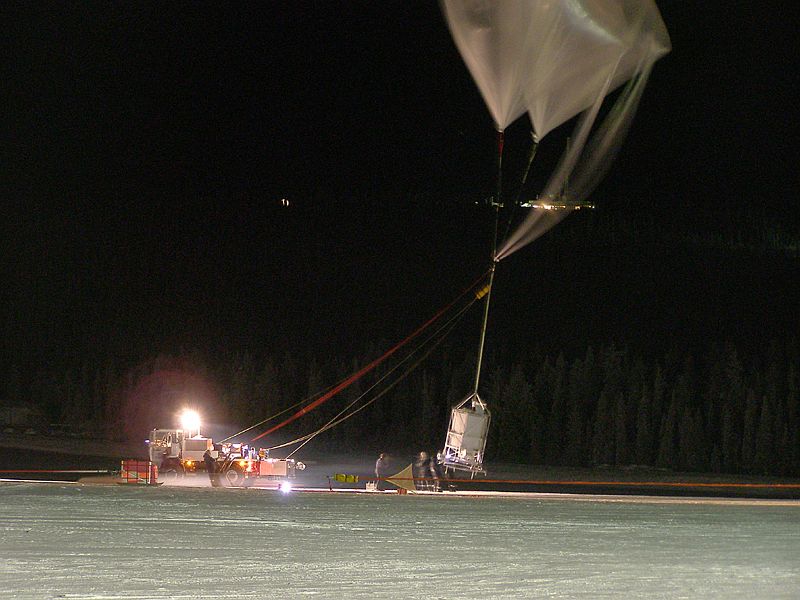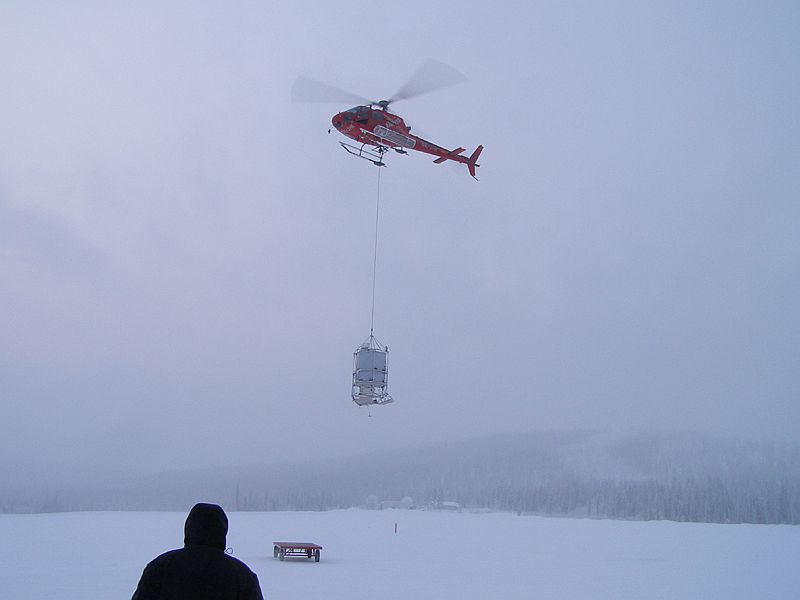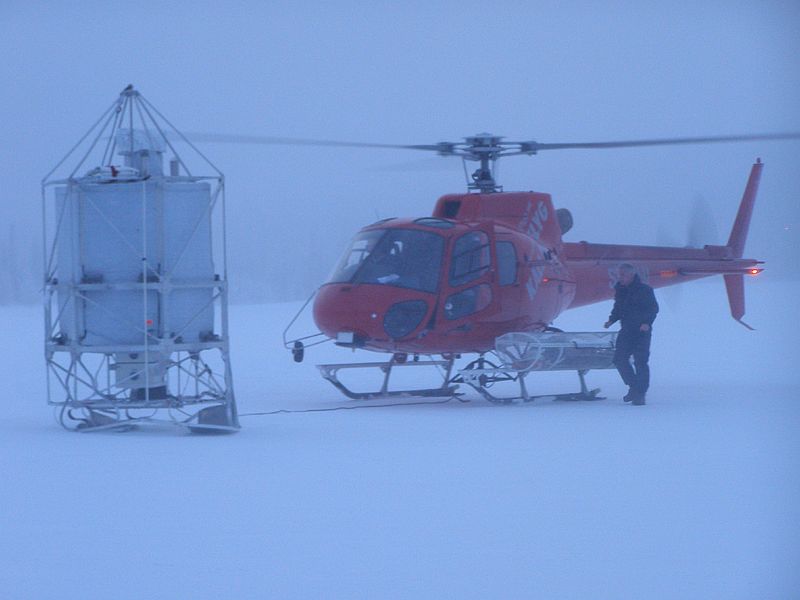Purpose of the flight and payload description
SPIRALE is a spectrometer with six tunable diode lasers dedicated to in situ measurements of trace compounds in the upper troposphere and the stratosphere up to 35 km altitude.
The 6 laser beams circulate in a multipass HERRIOTT cell located below the gondola. The lower mirror of the two-mirror cell is fixed at the top of a deployable mast. The distance between mirror is about 3.50 m. Given the curvature of the two identical mirrors, two stable optical configuration can be used : first 86 reflections and 300 m optical path, second 156 reflections and 554 m optical path, by moving the lower mirror 5 mm up.
The mast is deployed during the flight to have the first measurements at the tropopause. Around the instrument, a rigid metal frame encompasses it, in order to have a instrument-safe landing.
Inside the instrument, three liquid nitrogen cryostats, hold the six diode lasers and the 12 detectors.
Vertical profiles of concentrations of a great number of species like O3, CH4, CO, CO2, N2O, HNO3, NO2, NO, HCl, HOCl, H2O2, and COF2, are measured with a very high vertical resolution, a high sensitivity and a high precision.
Also was included in the gondola a piggy back experiment called STAC (Stratospheric and Tropospheric Aerosols Counter). It is an optical counter which can detect low particle concentrations, giving particle number densities and size distributions. Due to its small size, it can be mounted onboard various balloon-borne gondolas. The particles are drawn through a light beam emitted by a laser diode at 780 nm, and scattered light is received by a photodetector at a scattering angle of 70º. The number concentrations are calculated from the count rate of the photoelectric pulses received.
Details of the balloon flight
Balloon launched on: 1/20/2006
Launch site: European Space Range, Kiruna, Sweden
Balloon launched by: Centre National d'Etudes Spatiales (CNES)
Balloon manufacturer/size/composition: Zero Pressure Balloon
End of flight (L for landing time, W for last contact, otherwise termination time): 1/20/2006 at ~ 20:00
Balloon flight duration (F: time at float only, otherwise total flight time in d:days / h:hours or m:minutes - ): 3 h 30 m
Landing site: Near the village of Lannavaara, in the N part of Sweden
Campaign: ENVISAT
The balloon launch was successfully performed at 16:58 UT on January 20th 2006 by dynamic method assisted by an auxiliary balloon.
After reach float altitude of 27 km and a flight of 3.5 hours the balloon was taken down and the payload landed near the village of Lannavaara, in the north part of Sweden. The gondola structure was damaged during the landing without however affecting the instrument.
The recovery of the balloon and payload took place on 21 January by helicopter.
During this flight measurements were performed during the ascent of the balloon (from 10 to 27 km). This enabled the scientific team to measure simultaneously vertical profiles of O3, N2O, HNO3, and HCl mixing ratios and aerosols, with a very high vertical resolution of a few meters. Characteristic features of depletion linked to Polar Stratospheric Cloud formation were observed on the HCl and HNO3 profiles.
External references
- SPIRALE website Laboratoire de Physique et Chimie de l'Environnement - Orleans
- ENVISAT VALIDATION 4 Measurements made by balloon SSC Press Release (via Archive.org)
- In situ balloon-borne measurements of HNO 3 and HCl stratospheric vertical profiles infl
uenced by polar stratospheric cloud formation during the 2005-2006 Arctic winter Journal of Geophysical Research: Atmospheres, American Geophysical Union (AGU), 2010, 115, D21303 - List of balloons launched from ESRANGE SSC Space website (via Archive.Org)
- Technical Note: Validation of Odin/SMR limb observations of ozone, comparisons with OSIRIS, POAM III, ground-based and balloon-borne instruments Atmos. Chem. Phys., 8, 3385-3409, 2008
- Validation of ACE-FTS v2.2 measurements of HCl, HF, CCl3F and CCl2F2 using space-, balloon- and ground-based instrument observations Atmos. Chem. Phys., 8, 6199-6221, 2008
- Validation of HNO3, ClONO2, and N2O5 from the Atmospheric Chemistry Experiment Fourier Transform Spectrometer (ACE-FTS) Atmos. Chem. Phys., 8, 3529-3562, 2008
- Validation of NO2 and NO from the Atmospheric Chemistry Experiment (ACE) Atmos. Chem. Phys., 8, 5801-5841, 2008
1437If you consider this website interesting or useful, you can help me to keep it up and running with a small donation to cover the operational costs. Just the equivalent of the price of a cup of coffee helps a lot.

